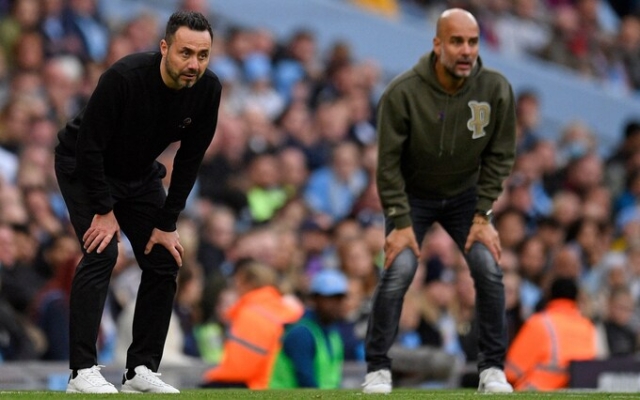 Roberto De Zerbi and Pep Guardiola are two men who are sure to set tactical trends this season. Credit: AFP/Oli Scarff
Roberto De Zerbi and Pep Guardiola are two men who are sure to set tactical trends this season. Credit: AFP/Oli Scarff
Preseason clubs are incredibly efficient at exploring each other, so coaches need to find new formulas before the season starts or risk being predictable.
The pre-season has provided an opportunity to experiment, and now it's time to see if these changes hold up under the pressure of the three points at stake.
Here are some of the tactical trends we expect to see over the upcoming Premier League campaign.
Boxing midfield< p>France won the 1984 European Championship with their «magic square» Luis Fernandez, Alain Giresse, Jean Tiganat and Michel Platini, so the concept of having two players on top and two deep in a tight midfield is not entirely new.
However, the best teams in the Premier League form their midfield a little differently, usually the defender changes positions. At Manchester City, it was centre-back John Stones paired with Rodri as City ramped up the game, with two more advanced midfielders in front of them. Arsenal shaped their penalty area with Oleksandr Zinchenko flipping a left-back and could use Urrien Timber in the same way this season.
Most interestingly, Jurgen Klopp emulated his great rival Pep Guardiola by instructing Trent Alexander-Arnold to move inside next to the Liverpool defensive midfielder. Alexis Mac Allister and Dominik Soboslai will play higher in summer contracts, giving Liverpool a three-box-three formation similar to the one we saw at City.
0308 Liverpool attacking structure < p>The system allows for more center passing options when players are in close proximity. The accumulation of bodies in the center of the field also provides a barrier against opposition counterattacks in the event of a ball loss. A higher pair in the field also ensures that half-spaces — pockets of space that are not quite in the center and not quite on the flank — are always occupied.
Placing more players in the middle of the pitch also narrows the defensive team, leaving the winger isolated from his full-back. Wingers who receive passes from full-backs in midfield will also have their eyes on the game and not with their backs to goal.
Matador football
Guardiola has been the benchmark for tactical trends over the past decade, but the city manager found what Roberto De Zerbi's Brighton studies (and admires).
Whereas Guardiola and his students encouraged their players to carry the ball into space, if the opponents fell, De Zerbi's players would pause and wait until the opponent covered them. The idea is to provoke the pressure before passing and moving into the space created by the third-person combinations.
Once the pressure is broken, Brighton quickly and purposefully attack with their wingers Karu Mitoma and Solly March. These moves look like counter-attacks, but Brighton builds them up with a build-up game.
It's not always exciting to watch this approach as Brighton defenders get back on their feet playing chicken. on the ball. While this is devastating when done correctly, it can lead to matches being played in a stop-start rhythm.
Will we see more managers follow De Zerby's lead? Since Opta began keeping statistics in 2015-16, the Premier League's average direct attack speed has dropped from 1.72 meters per second to 1.41 meters per second. The number of direct attacks per game decreased from 3.82 to 3.13. This trend may continue if teams choose to wait for their opponents to move before playing forward.
Premier League Attack Speed Big Man Upstairs is back in vogue
Although he can start in the attacking midfield position, Arsenal have added Kai Havertz to their squad and Mikel Arteta has used him as a striker in the Community Shield. Liverpool have bought Darwin Nunez and Cody Gakpo in the last 12 months, during which time Erling Haaland has ruined the league. Manchester United's new striker Rasmus Hoylund is over 6 feet tall. Brighton's Evan Ferguson is an outstanding talent built like a traditional centre-forward.
Going forward in the league, Luton Town will rely on a direct game with striker pairing Carlton Morris and Elijah Adebayo. Fulham and Everton's seasons could depend on Aleksandar Mitrovic and Dominik Calvert-Lewin. Brentford will be counting down the days until Ivan Toni returns.
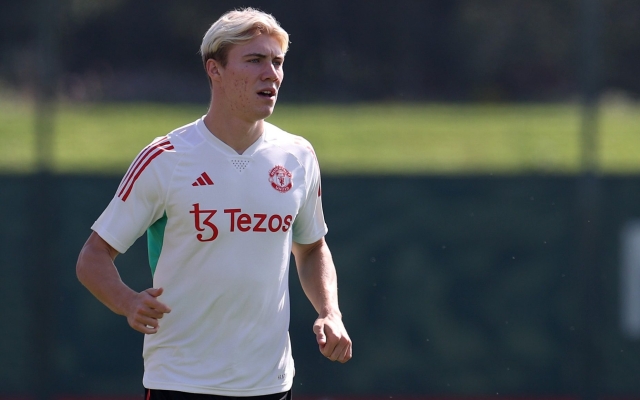 Rasmus Højlund joins the growing roster of traditional Premier League strikers. Photo: Getty Images/Matthew Peters
Rasmus Højlund joins the growing roster of traditional Premier League strikers. Photo: Getty Images/Matthew Peters
Extensive use of data Analytics have shown that football clubs tend to use lower quality chances. Clubs also know that crosses closer to the baseline are more dangerous than crosses from deep. So don't expect these teams to throw the ball at the mixer in the heat of the moment.
However, using the air power of a taller striker can be extremely beneficial for high pressure play. There are well-organized pressing patterns in the division, whether they be man-centered, zonal, or hybrid. Passing through the high press is potentially the most fruitful, but also the most risky. Playing with the press is less risky, but also less dangerous. Overcoming all obstacles in order to immediately take the ball or pick up a second ball can be a useful weapon in your arsenal.
The return of the defensive defender
Not so long ago, every team wanted to find full-backs who would be the next Dani Alves or Ashley Cole: converted wingers who fly forward on the overlap from the outside of their winger.
No one would say no to players of this caliber, but coaches recognize the value of a more defensive full-back. City played regularly with four centre-backs plus Rodri last season, while Arsenal used Ben White, William Saliba, Gabriel and Timber against City in the Community Shield. All four of these players played for some time as centre-backs. There are echoes of Liverpool's Gerard Houllier in 2001, who won three cup competitions thanks to a solid back four of Babbel, Henchos, Hippie and Carragher. Much more is expected of today's ball-handling defensemen.
One of the reasons coaches use at least one conservative fullback is to counterbalance the opposite inverting fullback. Several teams are now asymmetrically positioned, with each cornerback performing a different task. Last season, Newcastle United lined up with Kieran Trippier on the right and a redesigned centre-back Dan Byrne on the left last season.
Another reason is that many of the league's most dangerous scorers are Marcus Rashford, for example. Mohamed Salah and Bukayo Saka attack from the flank. A right centre-back playing on the left flank can be effective against wingers looking to break in with their left foot.
Fantasy Football Promo




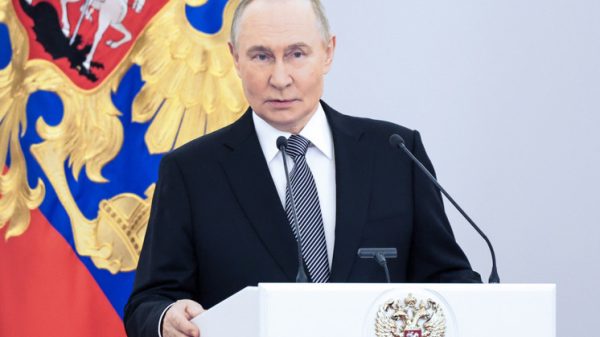








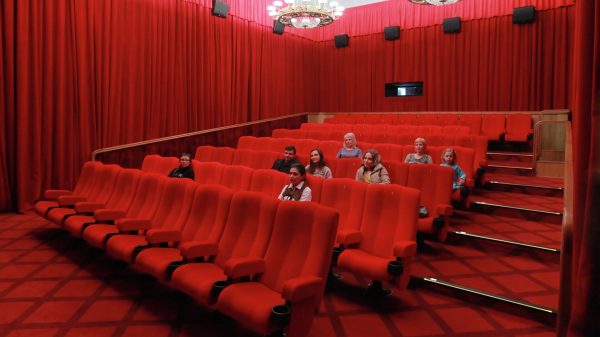

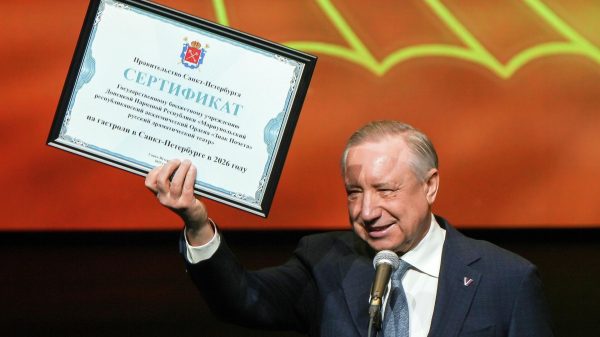





































Свежие комментарии